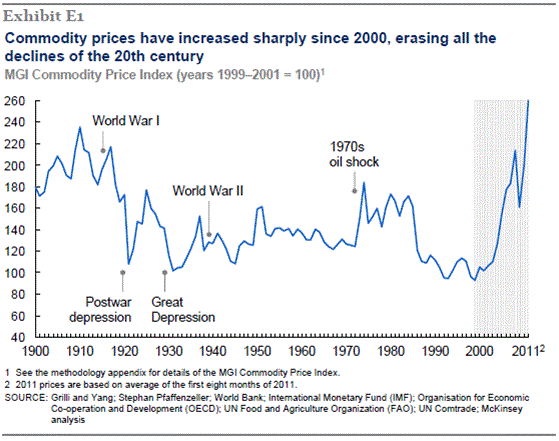Too Bearish on Brazil: Ruchir Sharma in Foreign Affairs
More on:
The recent Foreign Affairs article “Bearish on Brazil” lays out a quite pessimistic view of Brazil. For the author, Ruchir Sharma, the Brazil fuss has risen and will largely fall with commodities. Brazil’s policies of high interest but low investment rates, as well as high taxes and a large welfare state, mean that its “commodity-driven surge will soon begin to wash away.”
Sharma points out many of Brazil’s real challenges. Brazil is underinvesting (a problem that Brazilians at least say they are trying to address), whether in terms of infrastructure, education, or research and development. High interest rates too plague the markets, creating disincentives for long-term investments (though their slow but steady decline, and subsidized rates from the national development bank, help offset some of the barriers). He rightly points out too that Brazil’s rise can’t be explained without China and the scramble for natural resources. A graph of the last century’s commodity prices, posted on Jim Lindsay’s blog, highlights the price surge that has fueled Brazil’s growth.

But this take on Brazil and many of his subsequent conclusions miss the broader story. Yes, Brazil has grown—even in these commodity driven boom times—at half the pace of China or India. Yet these growth differences have at least as much today to do with the level of development and per capita income—Brazil’s nears US$12,000 a person, while China and India just break $8,400 and $3,700 respectively—as high interest rates and infrastructure. Historically, as nations get richer, growth gets slower.
Same for the critique of the welfare state. Yes, Brazil overspends particularly on public sector pensions (though they recently passed a law to rein in future spending). But other policies—conditional cash transfers such as Bolsa Familia and Brazil Without Poverty—have arguably spurred growth by expanding and supporting Brazil’s growing middle class. Now some 100 million strong, these domestic consumers have powered Brazil’s economic rise (an internal market that China, for instance, has yet to develop).
Further, the assumption that social programs that reduce poverty and inequality in middle income countries hinder rather than help growth is contradicted by many economic studies. For instance, World Bank studies show that poverty and inequality drag on economic growth. As a historical footnote, European countries and the United States began building their own welfare states at around these per capita levels, to great economic growth effects (increasing productivity of the economically active population and smoothing life time consumption patterns, which increased domestic demand and the like).
In the end, today’s hype about Brazil may not in fact be justified. The nation faces many difficult problems—among them education, infrastructure, complex bureaucracies, and expensive regulations. But its successes and failures will be a part of a more complicated and broad based interplay, rather than a just a commodity slowdown.
More on:
 Online Store
Online Store